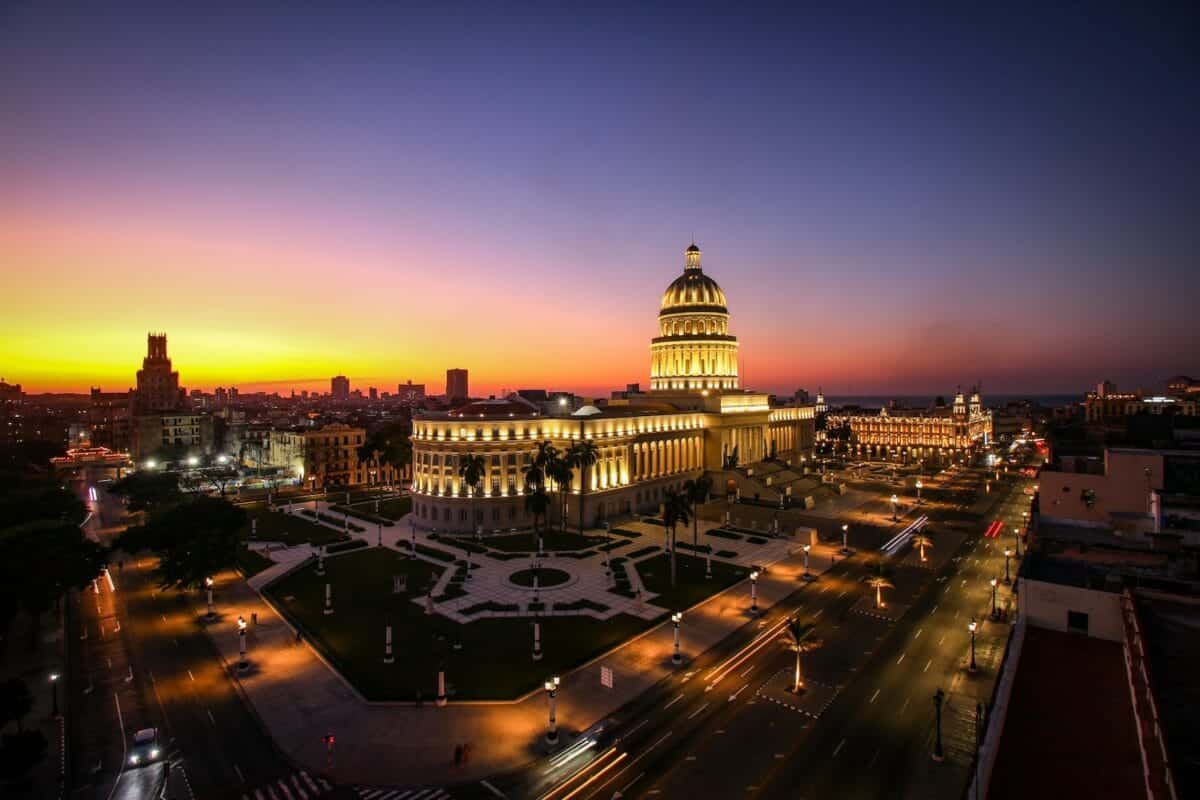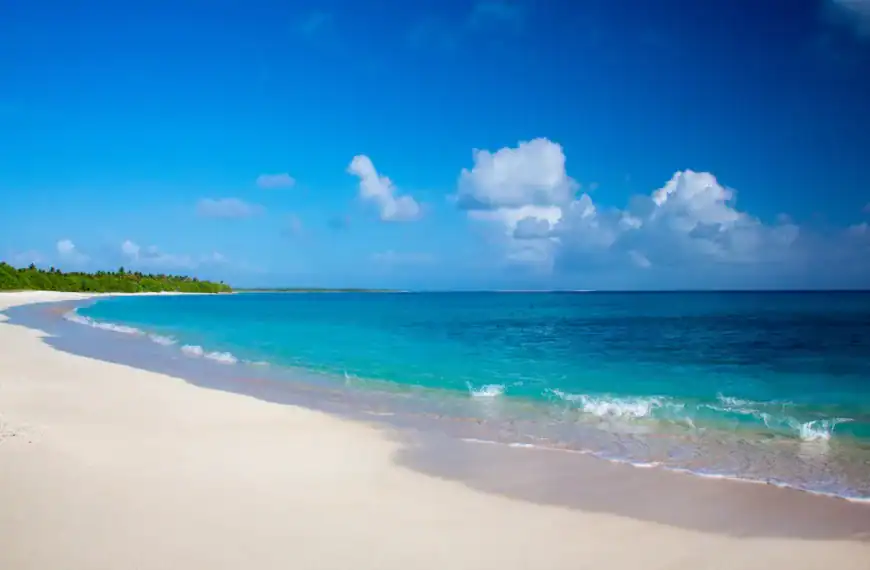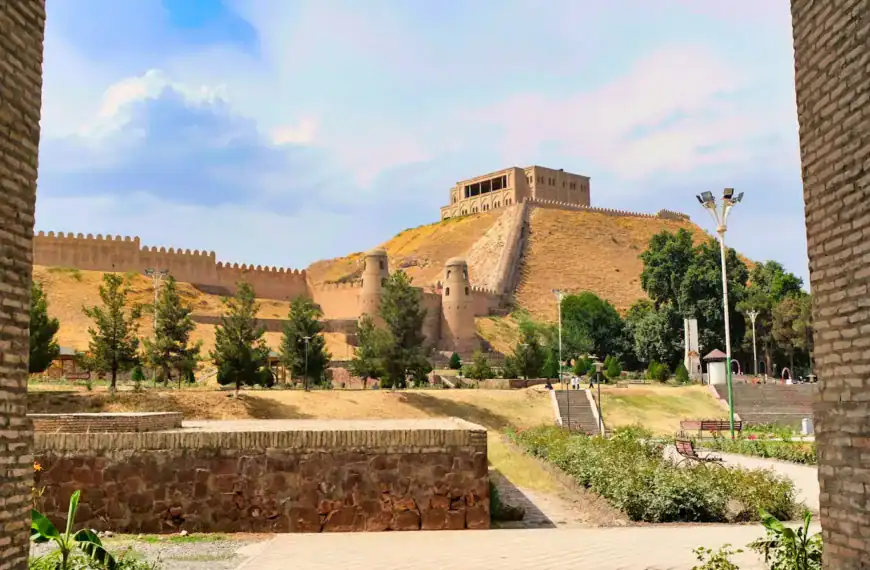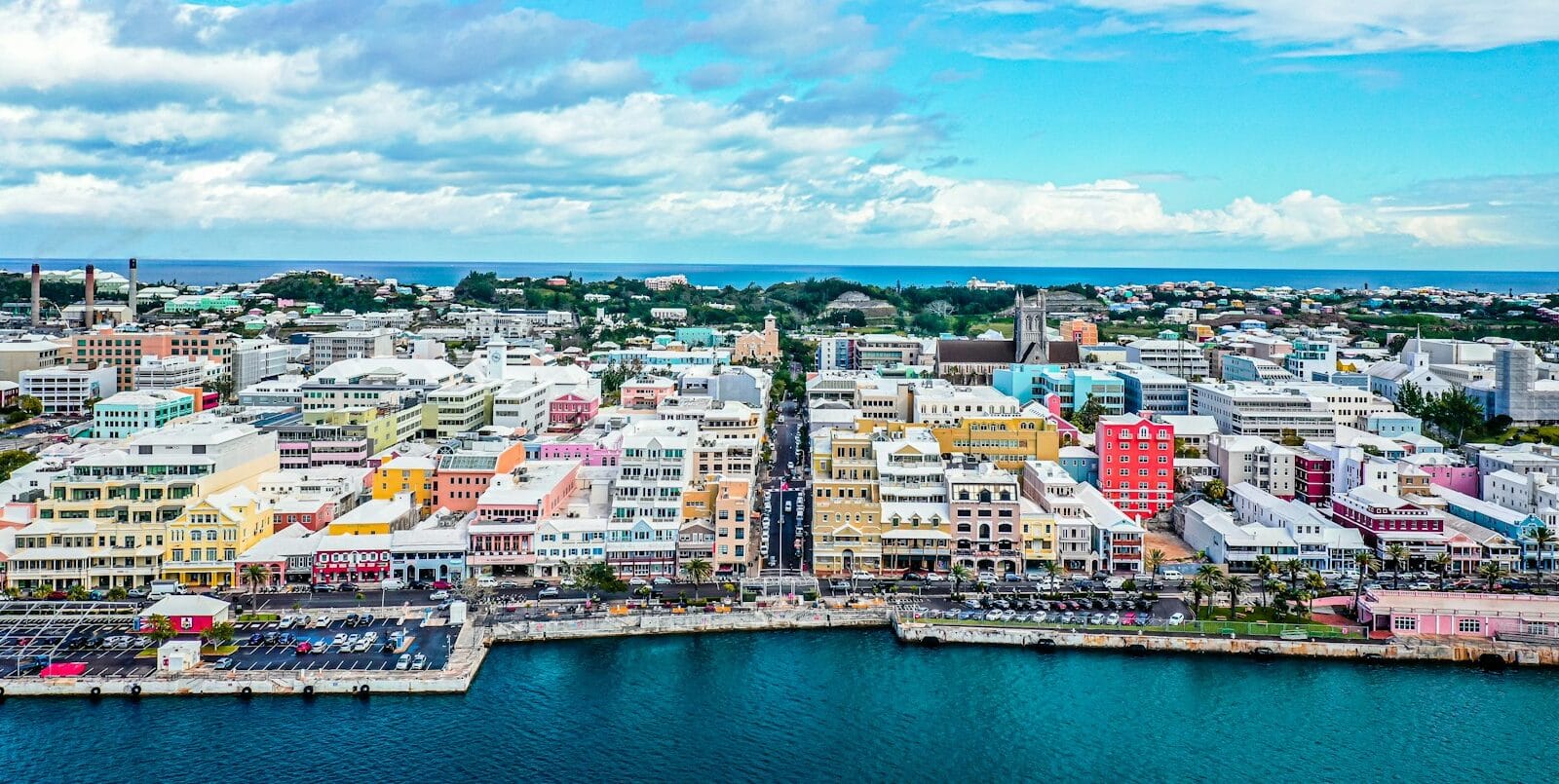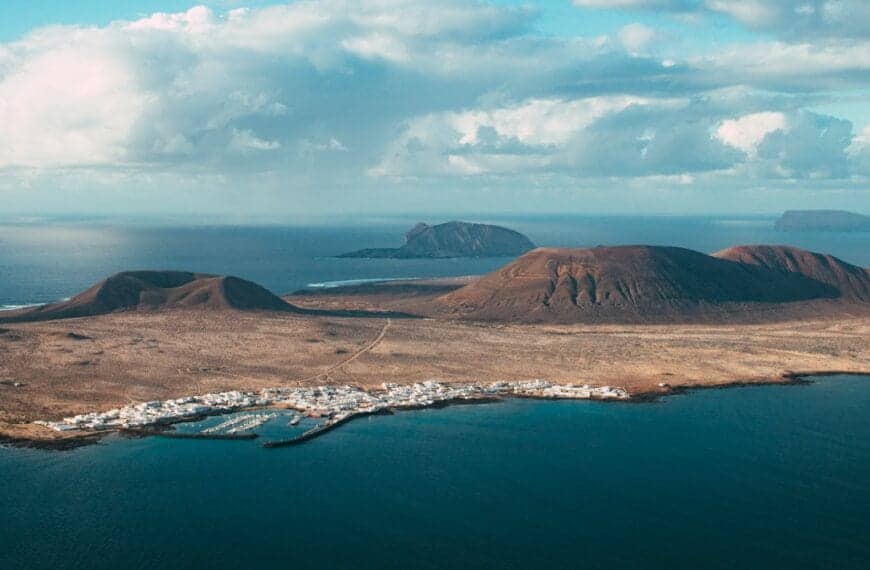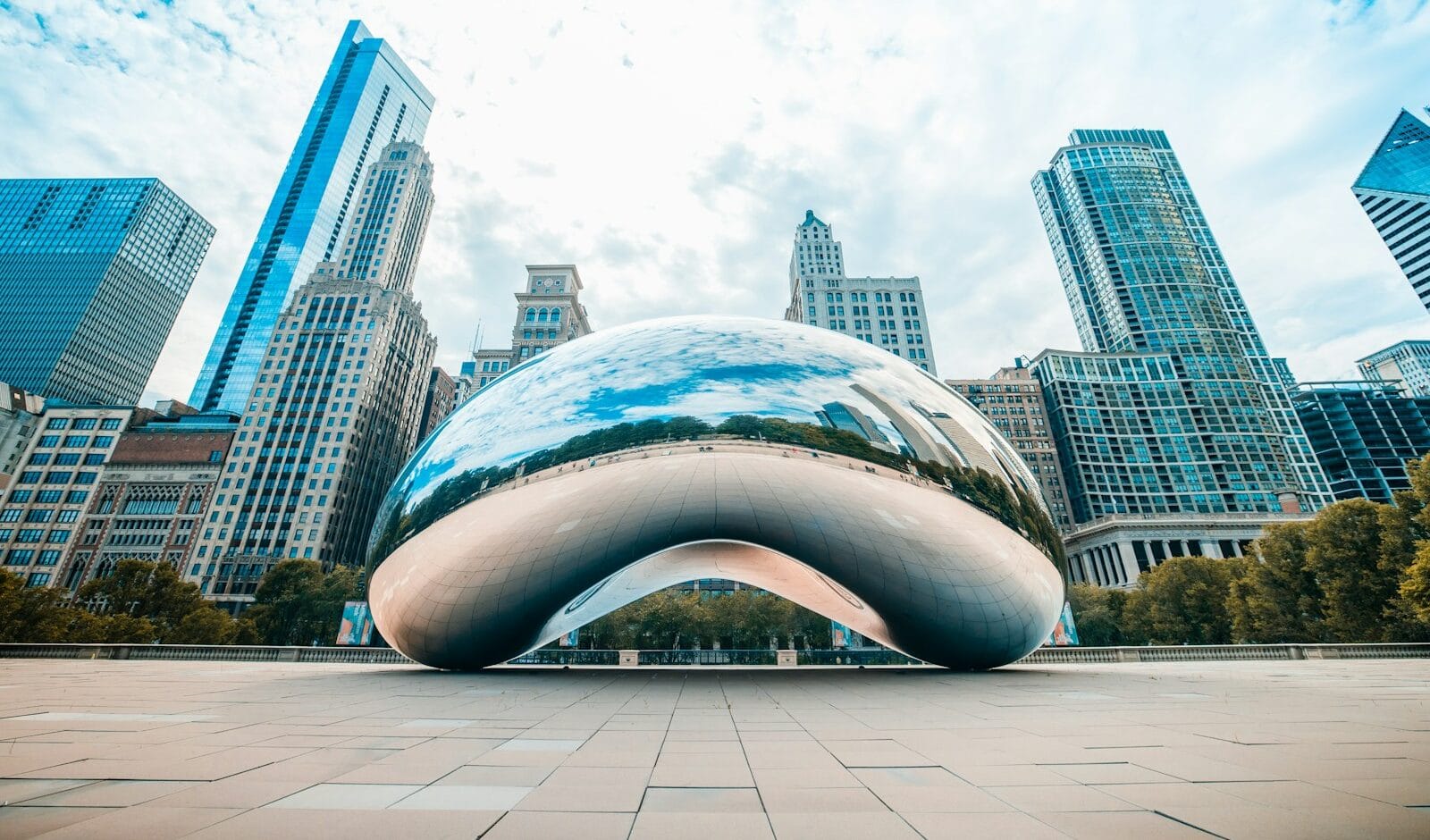Cuba Travel Guide for Beaches, Music and Havana
Intro to Cuba Travel Guide
Cuba is a country where the echoes of history blend with the energy of music and dance. Classic American cars rumble past pastel-colored colonial facades, while salsa spills into Havana’s streets and rural tobacco farmers roll cigars in the Vinales Valley. From the white sands of Varadero to the UNESCO-listed city of Trinidad, Cuba offers a mix of culture, adventure, and Caribbean warmth. This Cuba travel guide takes you through its regions, heritage, and itineraries so you can experience the island beyond the clichés.
Best Places in Cuba
Baracoa | Cienfuegos | Havana | Holguín | Santiago de Cuba | Trinidad | Varadero | Viñales
💡Quick Facts:
Destination: Cuba
Continent: North America (Caribbean)
Country: Republic of Cuba
Administrative Divisions: 15 provinces + Isla de la Juventud (special municipality)
Area: 109,884 km² (42,426 mi²)
Population: ~11 million
Density: ~100 people per km²
Capital: Havana (La Habana)
Regions/Subregions: Western Cuba (Havana, Pinar del Río, Varadero), Central Cuba (Santa Clara, Cienfuegos, Trinidad), Eastern Cuba (Santiago de Cuba, Holguín, Baracoa)
Official & Regional Languages: Spanish (official); Haitian Creole, English in tourist zones
Currency: Cuban Peso (CUP); Cuban Convertible Peso (CUC) phased out; U.S. dollars, euros accepted in some resorts
Time Zone(s): Cuba Standard Time (UTC–5); Daylight Saving (UTC–4) observed seasonally
Airports: José Martí International (HAV, Havana), Juan Gualberto Gómez (VRA, Varadero), Antonio Maceo (SCU, Santiago de Cuba), Frank País (HOG, Holguín)
Climate: Tropical – hot and humid; rainy season May–Oct; dry season Nov–Apr; hurricane season Jun–Nov
Known For: Classic cars, cigars, rum, music (salsa, son), colonial architecture, Varadero beaches, UNESCO-listed Old Havana
🛂Arrival Info:
Visa Policy: Tourist card (Tarjeta del Turista) required for most visitors, valid 30 days (extendable to 60)
Visa-Free: Limited to select nationalities
Visa on Arrival: Not available (must arrange tourist card before arrival)
Max Tourist Stay: 30–60 days depending on extension
Onward Travel: Proof of onward/return ticket required
Other Requirements: Proof of medical insurance required
Immigration Authority: Cuba Immigration
🏥Health Info:
Vaccines Required: None for entry
Vaccines Recommended: Routine immunizations, Hepatitis A, Typhoid
Health Risks: Dengue fever, Zika, food/waterborne illness
Hospitals: Cira García Clinic (Havana, caters to tourists), hospitals in major cities
Insurance: Mandatory; must show proof on arrival
Emergency Number: 104 (ambulance), 106 (police)
🚑 Check travel insurance options for travel emergencies, delays, and medical needs abroad — Get coverage here
💉 Stay Informed with Official Updates: WHO – International Travel & Health | CDC – Travel health updates
🚨Travel Advisory:
Safety Level: Generally safe; petty crime in tourist zones
Petty Crime: Pickpocketing, scams involving taxis/private rentals
Natural Risks: Hurricanes Jun–Nov; coastal flooding
Restrictions: U.S. citizens face travel restrictions under U.S. law
🌍Track Real-Time Official Updates: US Travel Advisory | UK Foreign Travel Advice | Government of Canada | NZ SafeTravel
🥳Holidays:
Liberation Day: Jan 1
Labour Day: May 1
National Rebellion Day: Jul 26
Independence Day (from Spain): Oct 10
Christmas Day: Dec 25
Triumph of the Revolution: Jan 1 (double significance)
(Local: Havana Carnival in Aug, Santiago Carnival in Jul, Havana International Jazz Festival in Jan)
💰Visitor Info:
Currency: Cuban Peso (CUP); U.S. dollars and euros accepted in tourist areas
Cards & ATMs: U.S. credit/debit cards not accepted; ATMs limited; cash recommended
Tipping: 10% in restaurants, small tips appreciated for services
Tourist Taxes: Airport departure tax usually included in ticket price
Average Budget: $30–50/day (budget), $70–120/day (mid-range), $150+ (luxury)
🛫Airports:
HAV – José Martí Intl (Havana): Main international hub
VRA – Juan Gualberto Gómez (Varadero): For beach resorts
HOG – Holguín, SCU – Santiago, SNU – Santa Clara: Serve eastern and central provinces
🧳 Delayed or canceled flight? Check if you’re eligible for compensation
🚍Transport:
Local Transit: Taxis, shared colectivos, urban buses (not tourist-friendly)
Tourist Options: Coco taxis, bici-taxis, private drivers
Intercity: Viazul bus network for tourists; trains slow but scenic
Driving Laws: Right-hand traffic; car rentals expensive and limited fuel supply
🚗 Book reliable airport transfers and in-city rides in advance. Reserve your ride here
🛰️Connectivity:
Mobile Networks: ETECSA (state provider)
Coverage: Expanding, but patchy in rural areas
eSIM Options: Limited; SIM cards sold at ETECSA offices
Public Wi-Fi: Available via prepaid cards at hotspots and hotels
🛜 Stay connected abroad with affordable eSIM data packs. Get your eSIM here
📜Laws & Etiquette:
Drinking Age: 18
Smoking Laws: Allowed outdoors; restricted indoors in many public places
Dress Code: Casual; lightweight clothing; modest attire in churches
Etiquette: Politeness valued; music and dance part of social culture
LGBTQ+ Safety: Havana progressive; rural areas more conservative
👮Emergency Info:
Emergency Number: 106 (police), 104 (ambulance), 105 (fire)
Tourist Info: Cuba Travel Official
🗺️US/UK Embassies Abroad: US Embassies | UK Embassies
🏛️ Embassy locator tools: Embassies Worldwide
🌞Weather:
Dry Season (Nov–Apr): 20–28°C (68–82°F), best time to visit
Wet Season (May–Oct): 24–32°C (75–90°F), heavy showers, hurricanes possible
Hottest Months: Jul–Sep, often >32°C (90°F)
Best Time to Visit: Dec–Apr for dry, sunny weather
🌦️ Stay prepared—check the weather forecast for your destination — Weather Forecast
Discover Cuba Region by Region
Havana & Western Cuba
- Havana – The capital’s Old Havana (Habana Vieja) is a UNESCO site filled with cobbled plazas, baroque churches, and rooftop bars. Ride in vintage cars, explore the Malecón, and visit revolutionary landmarks like Plaza de la Revolución.
- Viñales Valley – Famous for tobacco plantations, mogote hills, and traditional farmhouses. Guided hikes and horseback tours reveal rural life and stunning scenery.
- Varadero – Cuba’s most famous beach resort area, with white sands, clear waters, and all-inclusive resorts, balanced by nearby caves and nature reserves.
Central Cuba
- Trinidad – A beautifully preserved colonial town with cobblestone streets, colorful houses, and live music filling every square. Nearby, Playa Ancón provides an easy beach escape.
- Cienfuegos – Nicknamed the “Pearl of the South,” this French-influenced city offers elegant architecture and a lively waterfront.
- Santa Clara – A hub of revolutionary history, home to the Che Guevara Mausoleum and museum.
Eastern Cuba
- Santiago de Cuba – A cultural melting pot known as the cradle of Cuban music. It hosts Carnival and Afro-Caribbean traditions.
- Baracoa – Cuba’s first Spanish settlement, surrounded by mountains, rivers, and cacao plantations. A paradise for eco-travelers.
- Holguín – Gateway to the eastern beaches of Guardalavaca, quieter alternatives to Varadero with clear turquoise waters.
Can’t-Miss Places in Cuba
- Old Havana – Explore plazas, colonial mansions, and vibrant street art.
- Viñales Valley – A rural landscape perfect for horseback rides, tobacco tours, and cycling.
- Trinidad – A colonial gem where time seems frozen in colorful architecture and cobblestones.
- Varadero – Iconic Caribbean beach destination with powdery sands and turquoise water.
- Santiago de Cuba – The birthplace of son and salsa, alive with festivals and Afro-Caribbean heritage.
- Santa Clara – A pilgrimage for history buffs with Che Guevara’s mausoleum.
- Cienfuegos – With French-style boulevards and cultural venues, it feels distinct within Cuba.
- Baracoa – Lush and remote, offering chocolate farms, rivers, and mountain treks.
- Holguín Beaches – Guardalavaca and Playa Pesquero are quieter, family-friendly seaside escapes.
- Bay of Pigs (Playa Girón) – A site of historic importance and a top spot for snorkeling and diving.
How to Decide Where to Travel in Cuba
- Culture & History Seekers – Choose Havana, Trinidad, and Santa Clara for colonial heritage and revolutionary landmarks.
- Beach Lovers – Varadero is iconic, but Guardalavaca and Playa Ancón offer more tranquil options.
- Music Enthusiasts – Santiago de Cuba is the birthplace of many Cuban rhythms, while Havana offers endless live venues.
- Eco-Travelers – Head to Viñales for rural charm or Baracoa for jungle hikes and cacao farms.
- Multi-Stop Explorers – Combine Havana and Viñales with central cities like Cienfuegos and Trinidad, finishing at Varadero’s beaches.
Getting Around Cuba
Urban Travel
- Taxis & Classic Cars – Colorful vintage taxis are iconic, though prices vary. Negotiate or ask for metered rides.
- Coco Taxis – Small yellow three-wheelers found in Havana, convenient for short distances.
- Public Buses – Inexpensive but often crowded and unreliable in big cities.
Cross-Country Transport
- Viazul Buses – The main bus line for tourists, connecting major cities affordably.
- Domestic Flights – Available but limited; delays are common.
- Car Rentals – Give flexibility but are expensive and sometimes in short supply.
Local Options
- Collectivos (Shared Taxis) – Popular for intercity routes, often cheaper and faster than buses.
- Bikes & Horseback – Ideal for exploring small towns like Viñales and Trinidad.
Budgeting Your Trip to Cuba
- Meals – Street snacks cost $1–3, mid-range restaurants $8–15, and upscale venues $30+.
- Lodging – Casas particulares (family-run guesthouses) start at $20–30 per night, mid-range hotels $60–120, luxury resorts $200+.
- Transport – Viazul bus tickets range $5–30, taxis $0.50–1 per km, car rentals $70–100 per day.
- Tours – Guided walking tours $10–20, day trips $30–80, multi-day packages $200+.
When to Visit Cuba
- Dry Season (November–April): Sunny, cooler weather perfect for beaches and sightseeing. Peak tourist season.
- Wet Season (May–October): Hot and humid, with afternoon showers and hurricane risk. Fewer crowds, lower prices.
- Carnival Season (July): Santiago de Cuba comes alive with parades and music, attracting visitors from around the world.
Festivals & Events in Cuba
- Havana Jazz Festival (January) – Renowned international and Cuban performers take the stage.
- Santiago de Cuba Carnival (July) – Colorful costumes, conga lines, and Afro-Caribbean rhythms.
- Havana Biennial (Every 2 years, April–May) – Showcasing contemporary Cuban and international art.
- Parrandas de Remedios (December) – A traditional festival of fireworks, parades, and floats.
- International Ballet Festival (October/November, Havana) – A prestigious event drawing global dancers.
Must-Do Experiences in Cuba
- Ride in a Classic Car – Cruise Havana’s Malecón in a 1950s convertible.
- Tour a Tobacco Farm in Viñales – Learn about cigar-making from local farmers.
- Walk Through Trinidad’s Old Town – Cobblestone streets alive with music and artisans.
- Relax on Varadero Beach – White sands stretching for miles with crystal-clear water.
- Dance to Live Music – From salsa in Santiago to jazz in Havana clubs, music is everywhere.
- Visit the Che Guevara Mausoleum – Santa Clara’s landmark dedicated to revolutionary history.
- Snorkel the Bay of Pigs – Coral reefs and marine life in clear waters.
- Hike Baracoa’s Mountains – Trails lead to waterfalls, rivers, and cocoa plantations.
- Explore Cienfuegos’ Waterfront – Enjoy French-style architecture and a relaxed pace.
- Watch Sunset on the Malecón – Havana’s iconic seawall comes alive with locals and travelers.
Adventure and Water Activities in Cuba
- Diving in Jardines de la Reina – A protected marine park with sharks, reefs, and pristine waters.
- Kayaking in Varadero – Paddle across calm bays and explore mangroves.
- Hiking Pico Turquino – Cuba’s highest mountain, in Sierra Maestra National Park, requires guided treks.
- Horseback Riding in Viñales – Trails through tobacco fields and karst valleys with local guides.
National Parks & Outdoor Adventures
- Viñales National Park – Known for tobacco farms and dramatic limestone mogotes.
- Topes de Collantes (Trinidad) – Lush forests, waterfalls, and coffee plantations.
- Alejandro de Humboldt National Park – UNESCO-listed, one of the most biodiverse areas in the Caribbean.
- Ciénaga de Zapata – A massive wetland with crocodiles, birdlife, and unique ecosystems.
History & Heritage in Cuba
- Old Havana – Colonial plazas, baroque churches, and Art Deco theaters.
- Trinidad – Preserved Spanish colonial architecture and cobblestone streets.
- Santiago de Cuba’s Fortress (Castillo del Morro) – A UNESCO site guarding the bay.
- Santa Clara – Revolutionary monuments centered around Che Guevara.
- Museo de la Revolución (Havana) – Telling Cuba’s 20th-century history.
Suggested Itineraries for Cuba
3-Day Itinerary
Day 1: Explore Havana’s Old Town, plazas, and museums, then ride a classic car along the Malecón.
Day 2: Take a day trip to Viñales for tobacco farms, horseback rides, and cave tours.
Day 3: Visit Havana’s art scene at Fábrica de Arte Cubano and enjoy sunset cocktails before departure.
5-Day Itinerary
Day 1: Begin in Havana with Old Town and Plaza de la Revolución.
Day 2: Visit museums, art galleries, and cruise the Malecón at night.
Day 3: Take a day trip to Varadero for beach time and water sports.
Day 4: Explore Viñales Valley’s farms, caves, and scenic viewpoints.
Day 5: Return to Havana for markets, crafts, and live music.
7-Day Itinerary
Day 1: Tour Old Havana and ride a classic car.
Day 2: Visit Viñales for tobacco tours and hiking.
Day 3: Spend a beach day in Varadero.
Day 4: Travel to Cienfuegos for French-inspired architecture.
Day 5: Explore Trinidad’s colonial town and nearby Playa Ancón.
Day 6: Visit Santa Clara for Che Guevara’s Mausoleum.
Day 7: Return to Havana for shopping, museums, and nightlife.
10-Day Itinerary
Day 1: Explore Havana’s plazas, churches, and Malecón.
Day 2: Dive into Cuban history at the Museum of the Revolution and Capitolio.
Day 3: Day trip to Viñales for horseback rides and cave tours.
Day 4: Relax in Varadero with water sports.
Day 5: Visit Cienfuegos’ squares and theaters.
Day 6: Explore Trinidad’s colonial streets and music-filled evenings.
Day 7: Hike Topes de Collantes for waterfalls and forests.
Day 8: Head to Santa Clara for revolutionary sites.
Day 9: Travel east to Santiago de Cuba for Afro-Cuban rhythms and fortress tours.
Day 10: Conclude with a final Havana evening of music and mojitos.
Unique Stays & Accommodations
- Casas Particulares – Family-run guesthouses offering local hospitality and home-cooked meals.
- Colonial Hotels in Havana – Restored mansions with period charm and central locations.
- Beach Resorts in Varadero – All-inclusive stays with pools and direct access to beaches.
- Eco-Lodges in Baracoa – Rustic lodges surrounded by cacao farms and rainforests.
Eating in Cuba: What to Try
- Ropa Vieja – Shredded beef stew with peppers and spices.
- Arroz con Pollo – A comforting chicken-and-rice dish.
- Tostones – Fried plantain slices, crunchy and savory.
- Picadillo – Ground beef with olives, raisins, and spices.
- Cuban Sandwich – Layers of pork, ham, cheese, and pickles in pressed bread.
- Café Cubano – Strong, sweet coffee served in small cups.
Staying Safe in Cuba
- Health – Tap water isn’t safe to drink; stick to bottled or purified.
- Scams – Beware of inflated taxi fares or unsolicited “guides.”
- Night Safety – Cuba is generally safe, but watch belongings in crowded areas.
- Cultural Etiquette – Greetings are warm; politeness and respect are expected.
Final Planning Tips for Cuba
- Visa Policy – Travelers need a tourist card (tarjeta de turista) available through airlines or embassies.
- Currency – Cuba uses CUP (Cuban Peso); cash is essential as cards are limited.
- Connectivity – Wi-Fi is available via prepaid cards at designated hotspots.
- Transport Apps – Offline maps (Maps.me) are essential, as internet access is limited.
- Packing – Bring lightweight clothing, sunscreen, and insect repellent.
- Insurance – Required for entry; check policies for medical coverage.
Plan Smarter, Travel Better
Cuba is a destination where culture and history flow as freely as the music on its streets. From revolutionary landmarks to natural wonders, the island offers a mosaic of experiences. With this Cuba travel guide, you’ll have the insight and inspiration to plan a trip that balances discovery with relaxation.
Continue Your Journey Beyond Cuba
- Mexico – Just across the Gulf, Mexico offers Mayan ruins, colonial cities, and beach resorts.
- Dominican Republic – A Caribbean neighbor with lively resorts, mountain ranges, and historic Santo Domingo.
- Jamaica – A quick flight away, known for reggae culture, waterfalls, and all-inclusive escapes.
- Panama – Connects the Caribbean with Central America, offering cosmopolitan Panama City and the Panama Canal.
- Costa Rica – For eco-travelers, its rainforests, volcanoes, and wildlife make it a perfect continuation.
It’s Time to Experience Cuba
Cuba captivates with its rhythm, resilience, and timeless charm. From Havana’s plazas and Viñales’ valleys to Trinidad’s colonial glow and Varadero’s beaches, the island offers moments that linger.
Begin planning today with this Cuba travel guide and let its magic unfold on your next adventure.

